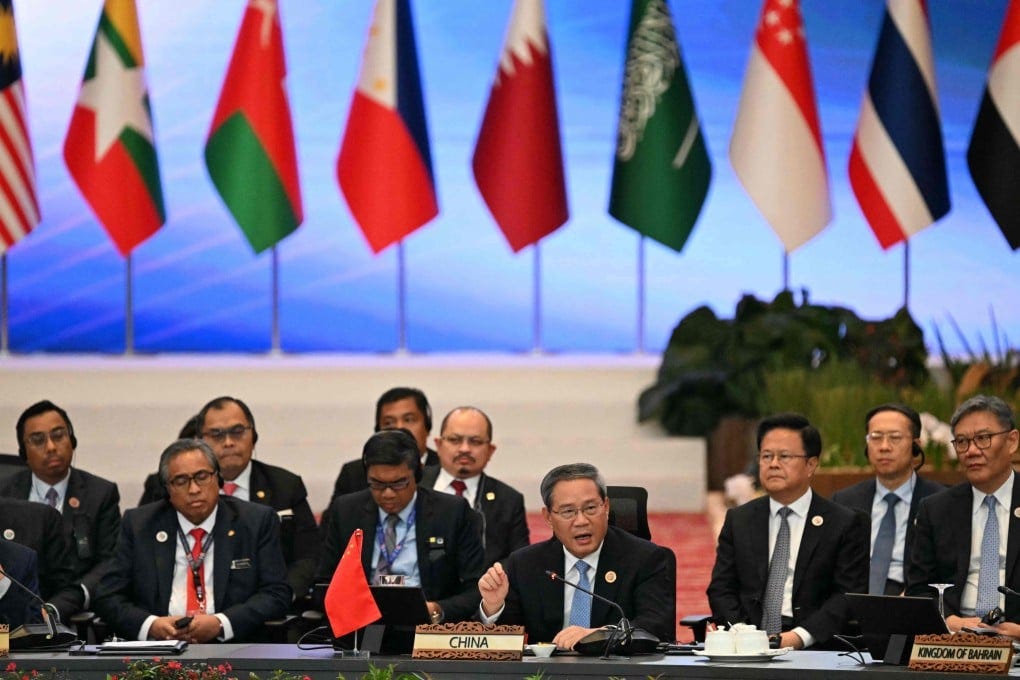The China in MENA Brief — June 5, 2025
Chinese Robotaxi Firms Eye Gulf Expansion as China, Iran, and Russia Hold Naval Drills

Sorry for the wait— Hope everybody has had a wonderful week!
1. Chinese Robotaxi Firms Target Gulf for Expansion
As China’s domestic autonomous vehicle market hits regulatory and commercial headwinds, its leading firms are expanding into the Gulf. Companies like Pony.ai and WeRide are launching pilot programs and exploring joint ventures in the UAE and Saudi Arabia, where cities such as Abu Dhabi and Dubai offer advanced infrastructure and favorable regulatory oversight.
Strategic Takeaways:
Digital Silk Road Deployment: Autonomous mobility becomes a channel for exporting Chinese cloud, sensor, and AI infrastructure.
Competing with America: China's export of autonomous vehicles to the Gulf could capture the market before American companies, such as Waymo and Tesla, reach the region with their autonomous vehicles.
Gulf as Testing Ground: China can experiment with smart-city concepts without facing Western compliance roadblocks.
2. China Expands Visa-Free Entry for Gulf Nationals
Beginning June 9, citizens of Saudi Arabia, Oman, Kuwait, and Bahrain will be eligible for visa-free travel to China for up to 30 days. The policy shift follows increased high-level engagement between Beijing and Gulf nations, and comes as China pushes to position itself as a hub for tourism and consumption.
This can be seen as a diplomatic sweetener ahead of potential economic and defense agreements, helping to establish China as a reliable and welcoming alternative to Western partners. China wants to move beyond just being an investor— they want to establish ties between their citizens and the Gulf
Strategic Takeaway:
Soft Power: China uses soft power strategies by promoting cultural exchange, increasing educational opportunities, simplifying visa processes, and strengthening diplomatic relations with Gulf countries. These initiatives help encourage tourism, attract students and professionals from the region to China, and expand trade in goods, services, and technology. Through these efforts, China builds mutual trust and familiarity, creating a favorable environment that supports its substantial investments in infrastructure and energy across the Gulf. This approach deepens China’s influence by embedding it more firmly in the region’s social and economic fabric.
Chinese Expansionism: To expand its influence in the Middle East, Xi Jinping is pursuing a policy of openness towards Gulf nationals who can shape public opinion on Sino-Gulf relations. It’s a people-to-people policy that can serve as a future public diplomacy campaign.
3. China, Iran, and Russia Conduct Naval Drills Near Hormuz
Warships from China, Iran, and Russia staged joint naval exercises last week in the Gulf of Oman, near the critical Strait of Hormuz. Though officially aimed at anti-piracy coordination, the drills—dubbed “Maritime Security Belt 2025”—coincided with rising Houthi attacks and ongoing U.S.–Iran nuclear negotiations.
Strategic Takeaways:
Axis of Resistance: Naval coordination solidifies a multipolar security structure, complicating U.S. maritime dominance.
Energy Corridor Pressure: By conducting military exercises and naval operations near major global oil transit routes such as the Strait of Hormuz or the Bab el-Mandeb, China signals its serious intent to protect the energy corridors that are crucial to its economic stability. These actions go beyond diplomatic assurances and reflect a concrete strategy to ensure uninterrupted access to vital resources. The visible presence of Chinese forces in these regions acts as a deterrent against potential threats and reinforces Beijing’s message that it is prepared to take active measures to secure its energy supply chains.
4. Saudi–China Green Investment
Trade between China and Saudi Arabia reached $40.2 billion by the end of 2024, driven in part by a surge in investment in renewables and clean tech. Chinese firms are backing hydrogen, solar, and EV-linked projects that align with Riyadh’s Vision 2030 strategy—and differ from Western ESG frameworks.
The alignment between Beijing’s decarbonization goals and Riyadh’s diversification from an oil agenda shows how energy ties are evolving into deeper industrial and technological integration.
Strategic Takeaway:
Clean Energy Leverage: China strategically integrates its clean energy technologies and standards into Saudi Arabia’s infrastructure projects, such as solar, wind, and grid systems, as part of broader cooperation under initiatives like the Belt and Road. This not only increases Chinese influence in a key Middle Eastern partner but also helps China diversify its energy routes. By investing in overland and regional partnerships, China reduces its dependence on maritime fuel transport routes that are vulnerable to geopolitical tensions, such as the Strait of Malacca or the Strait of Hormuz.
© 2025 The China in MENA Project. All rights reserved.
Newsletter every Monday & Friday ( X: @chinainmena)
Managers Zineb Riboua ( X: @zriboua) & Alexander Aibel
Contact: riboua@chinainmena.com


You always come with a new and in-depth information .